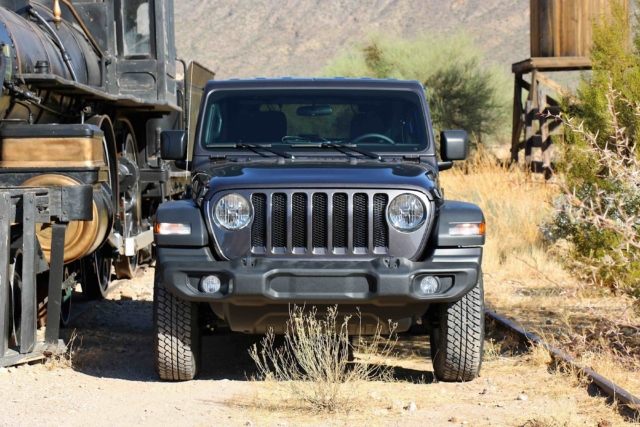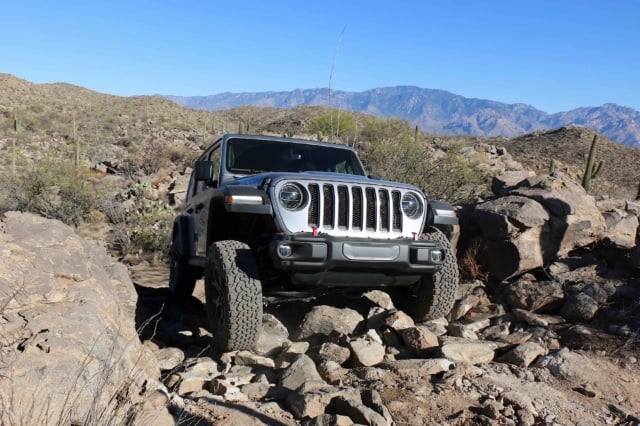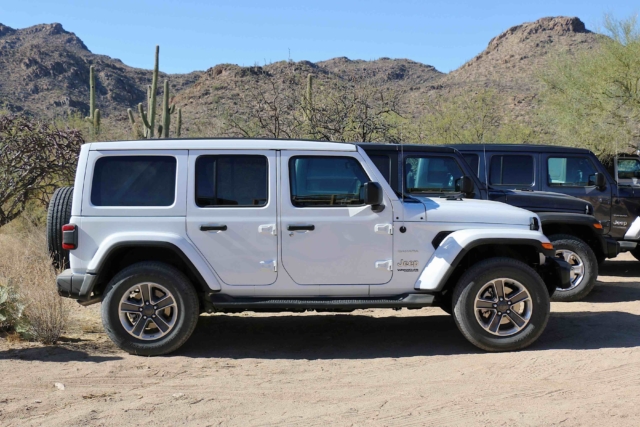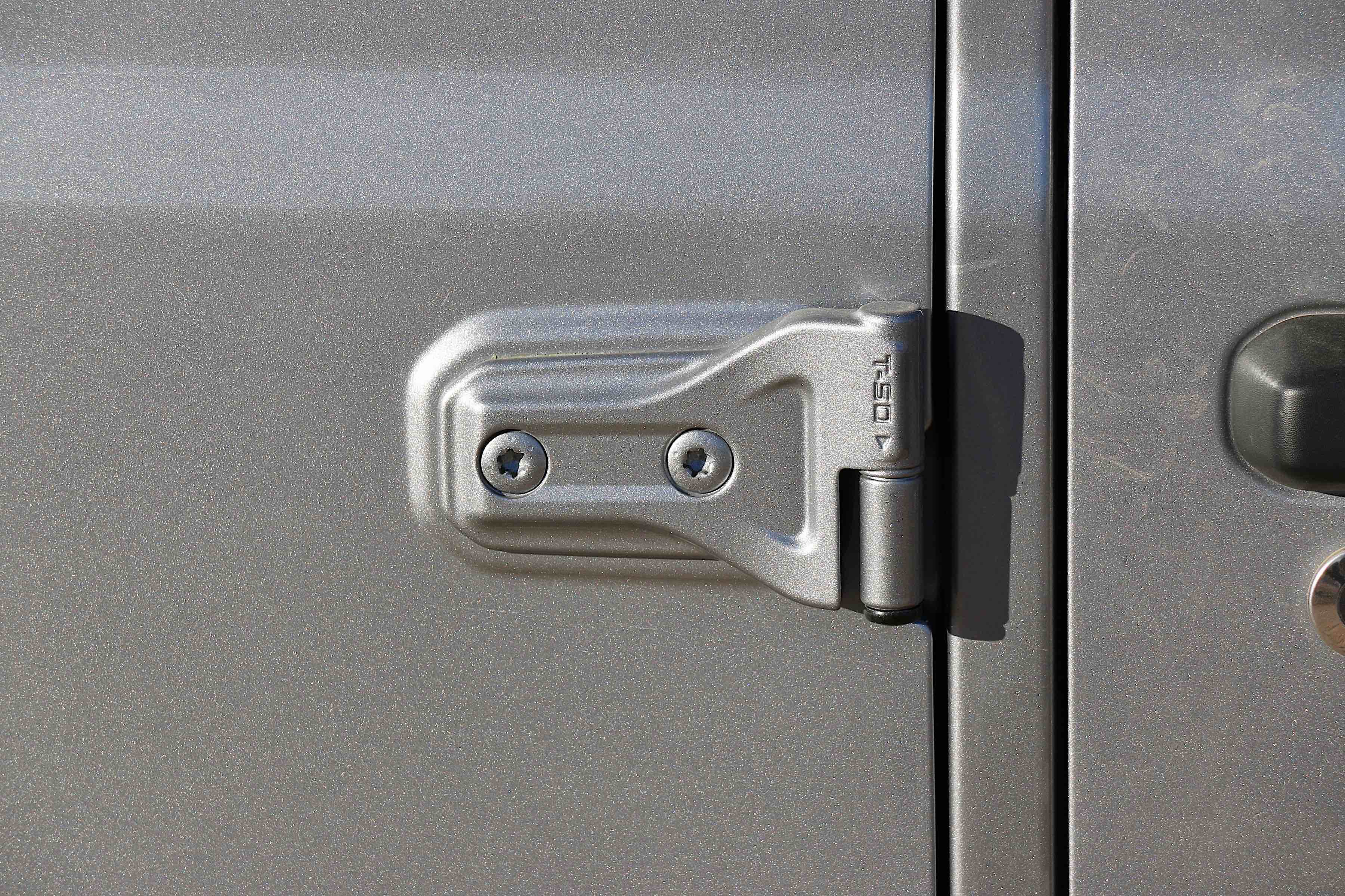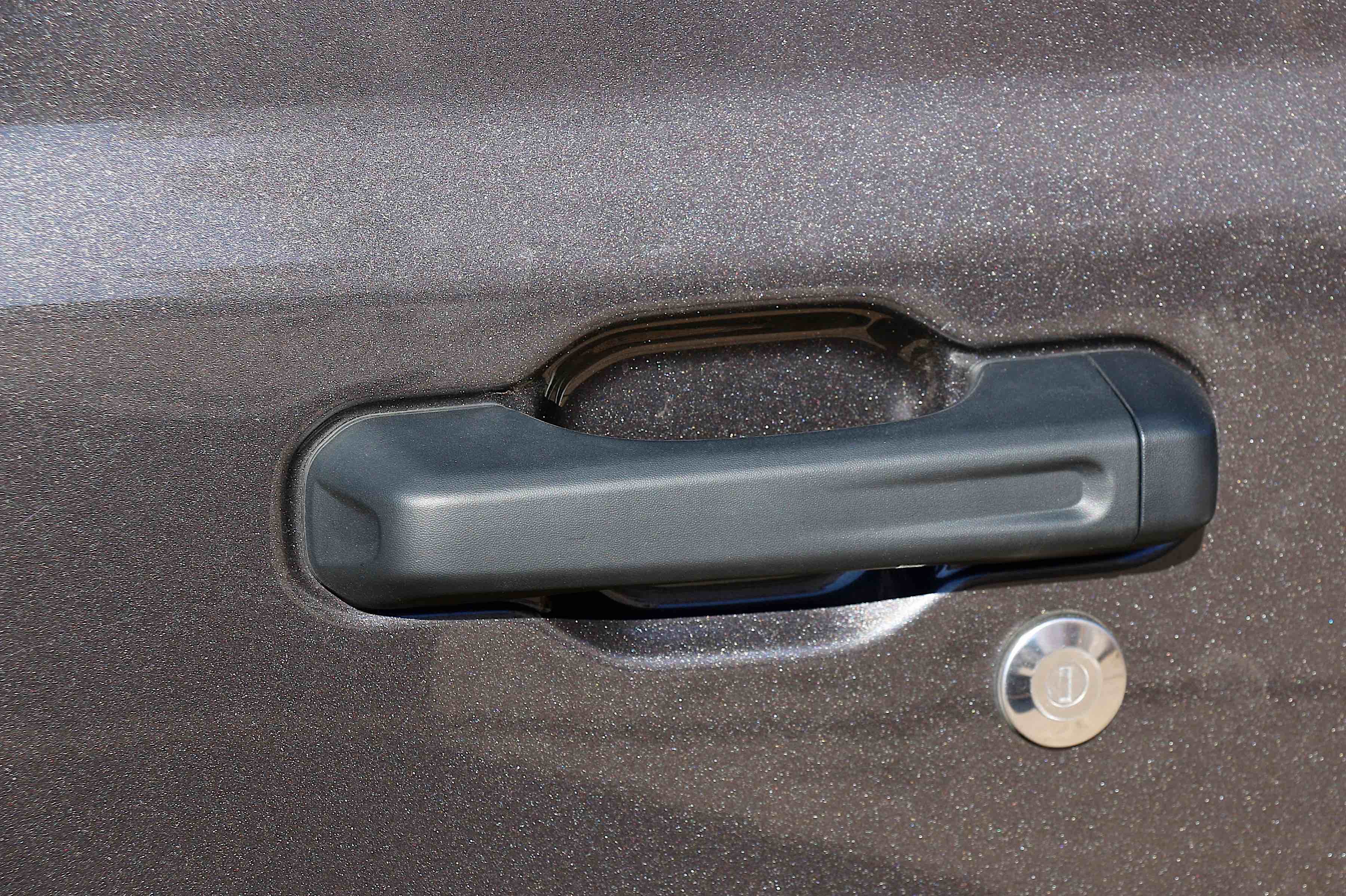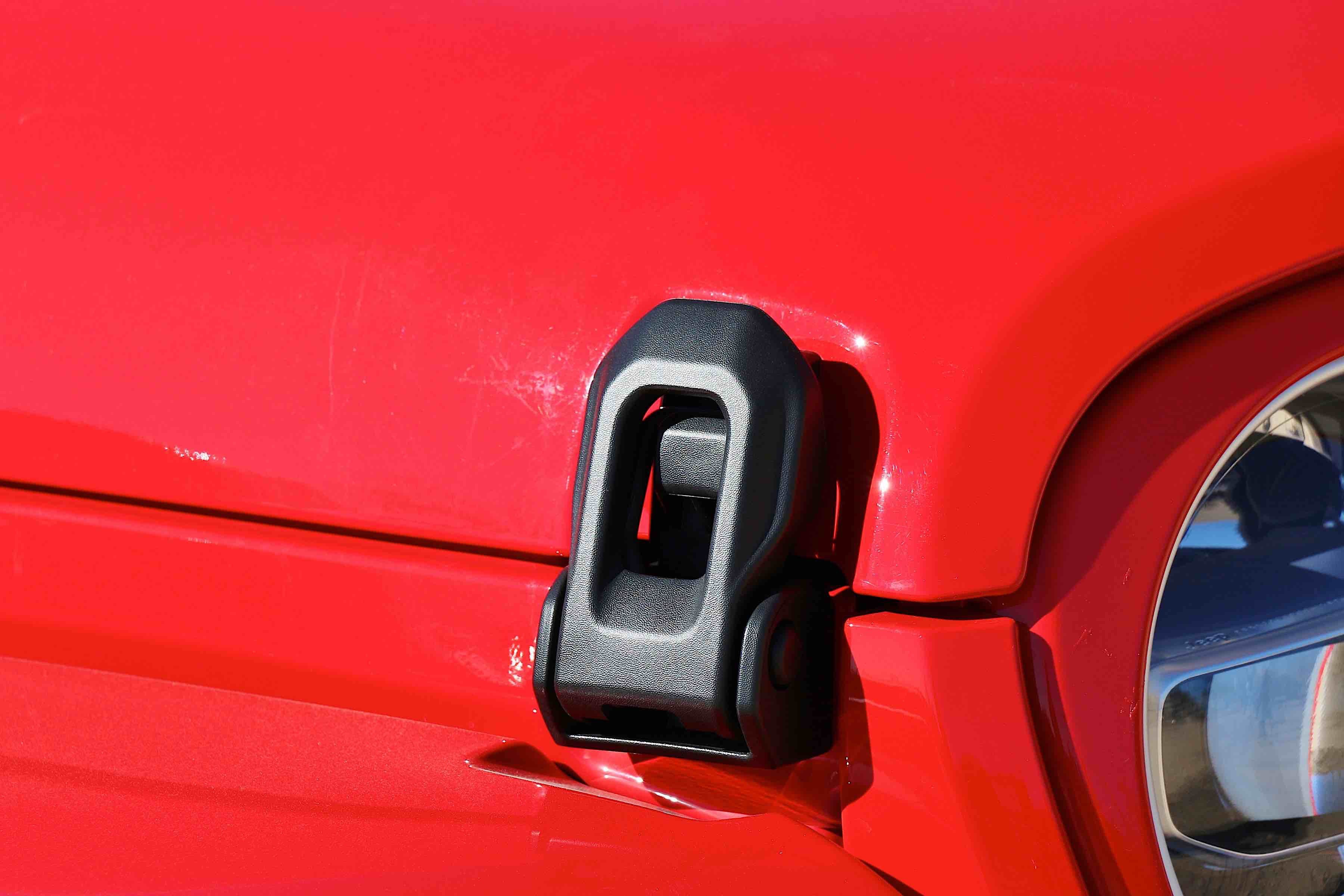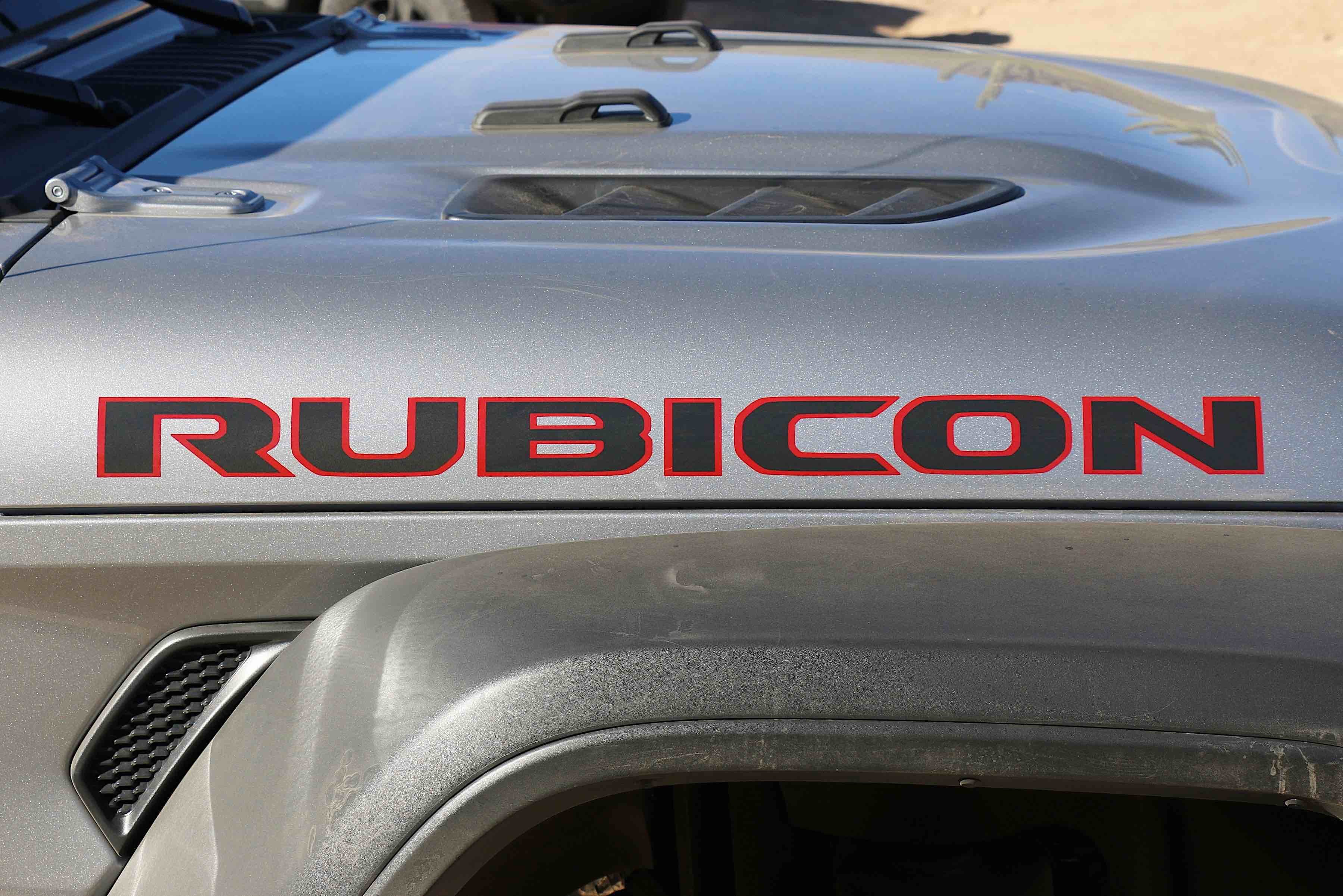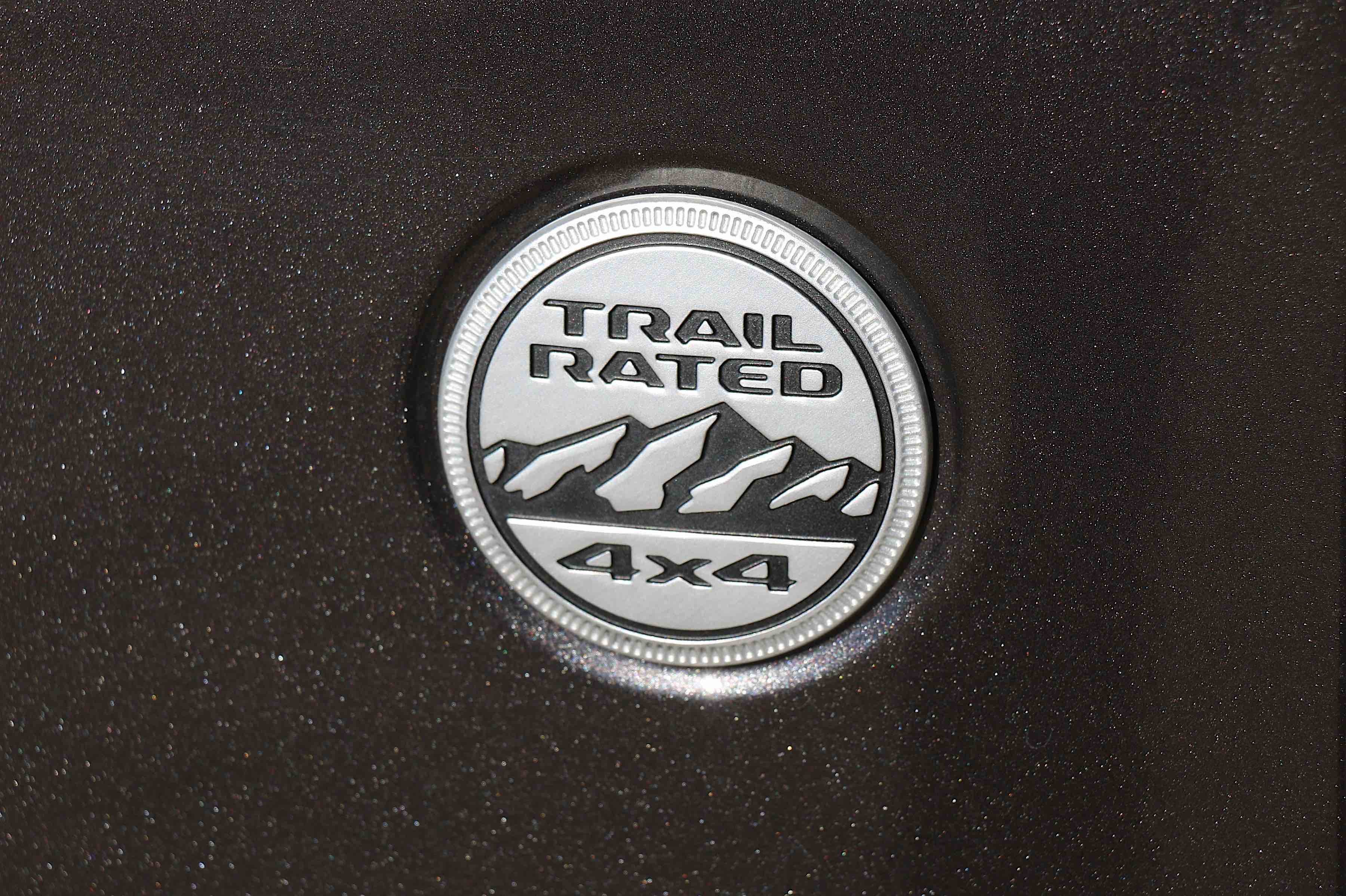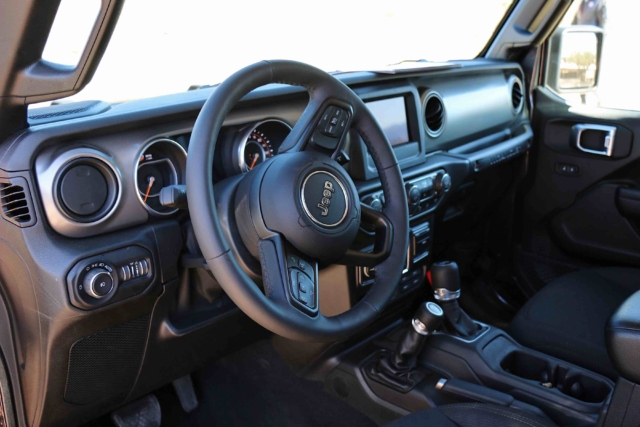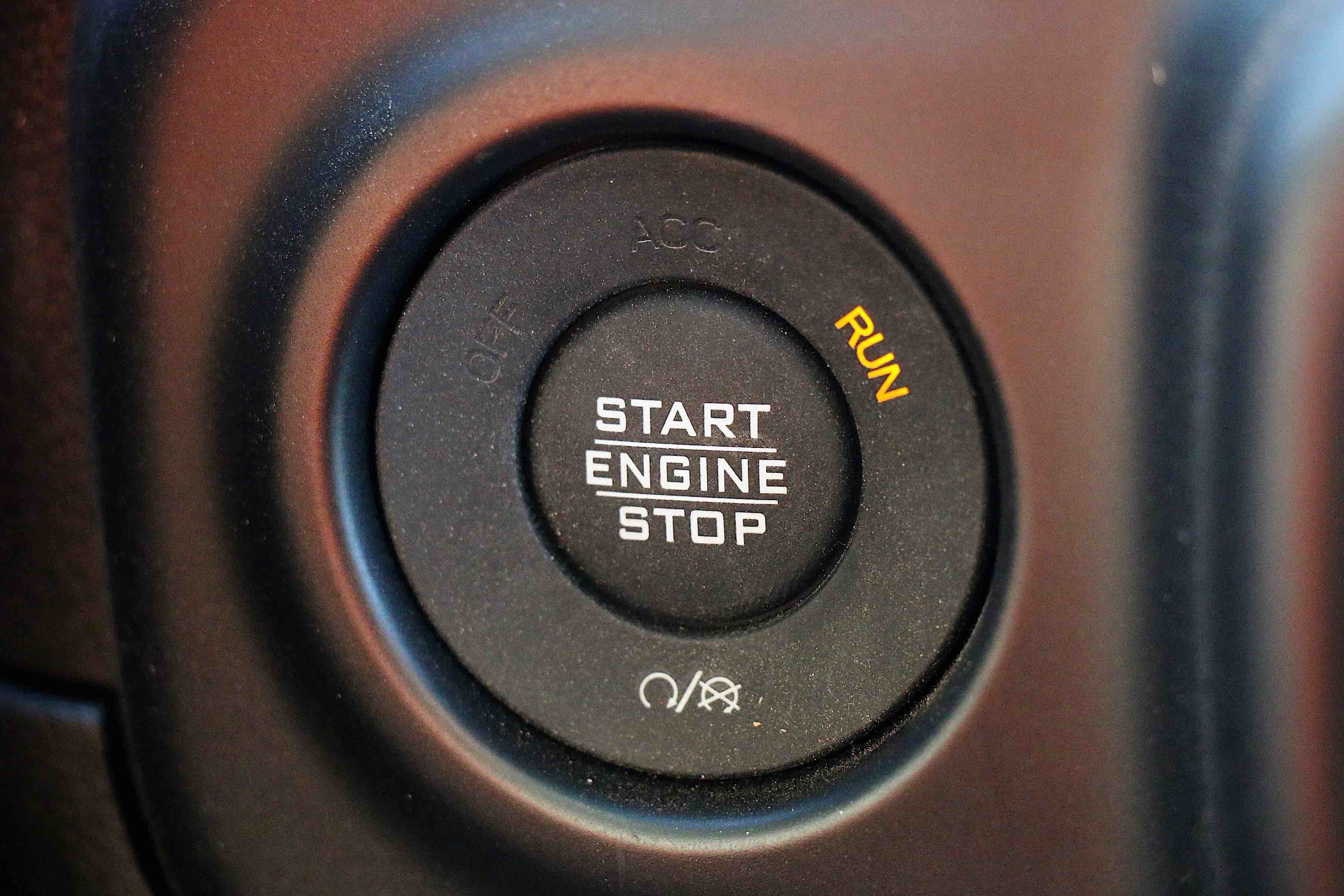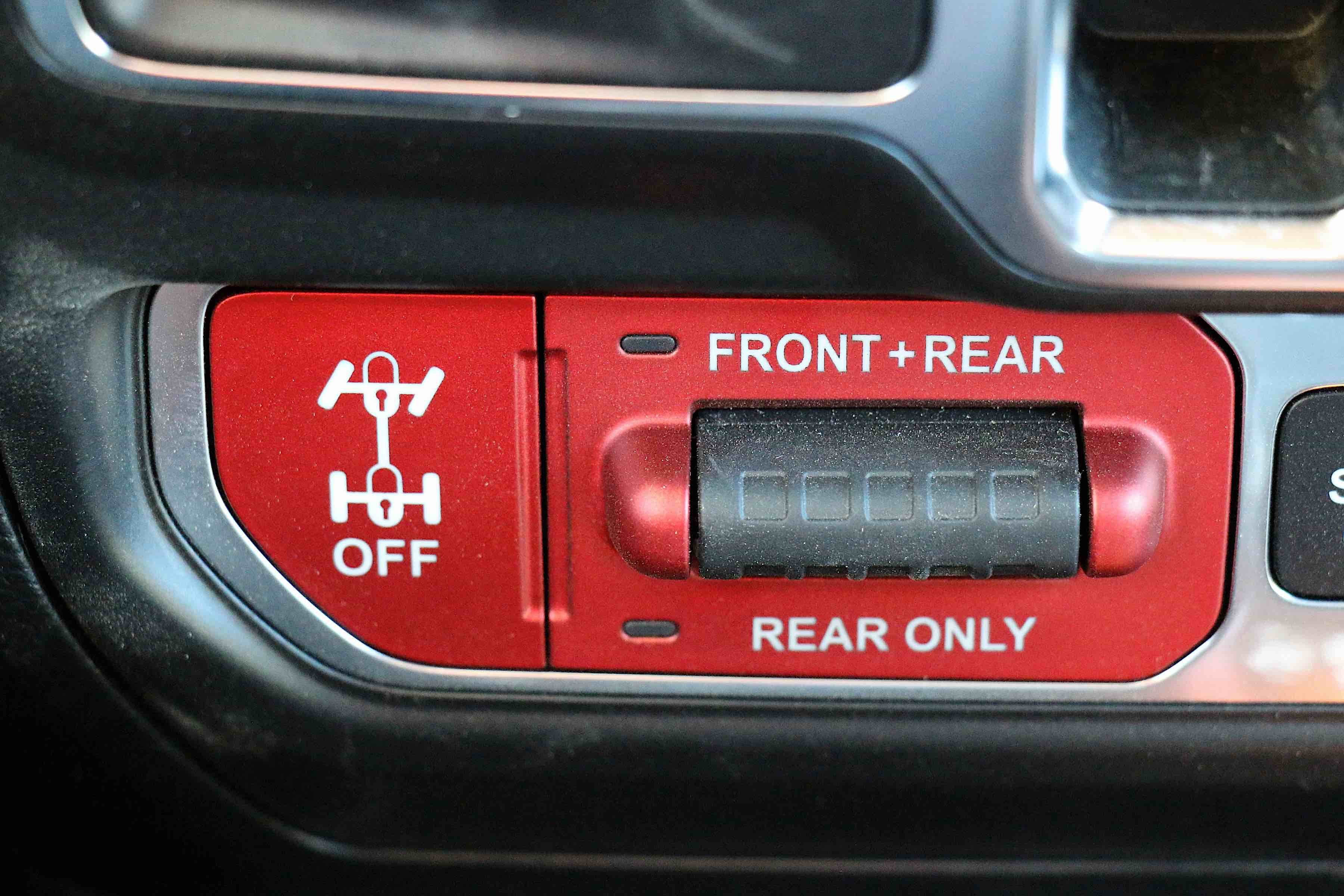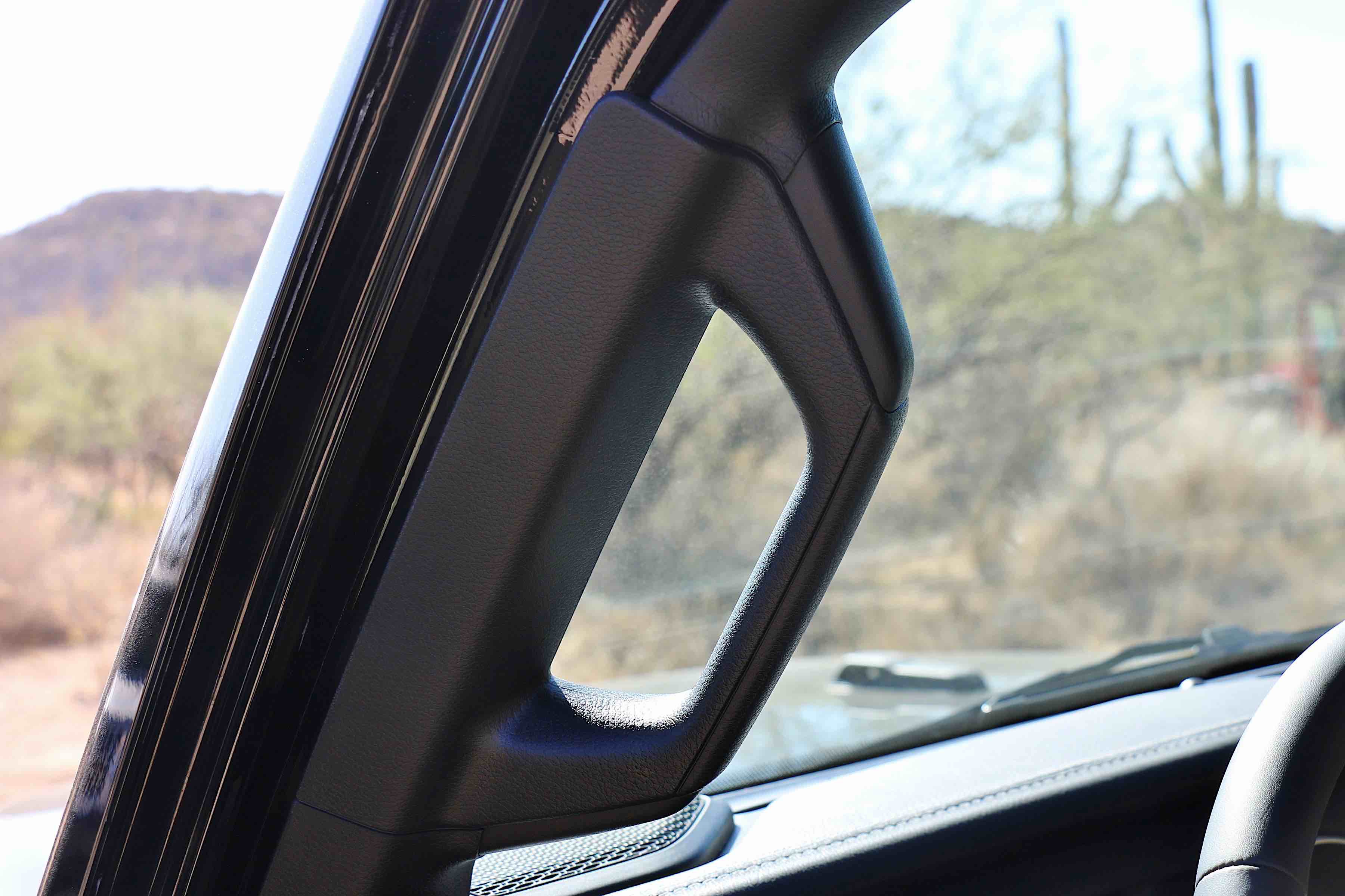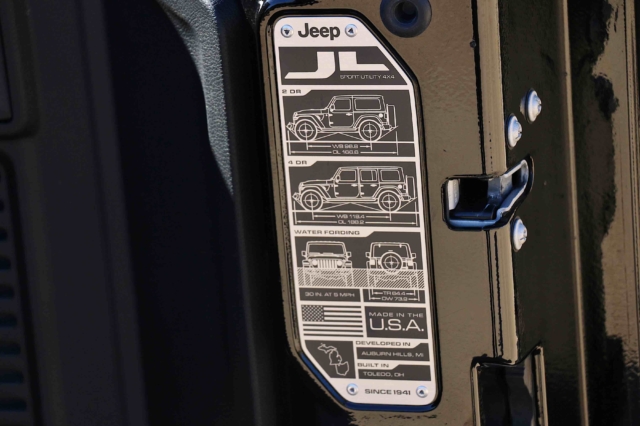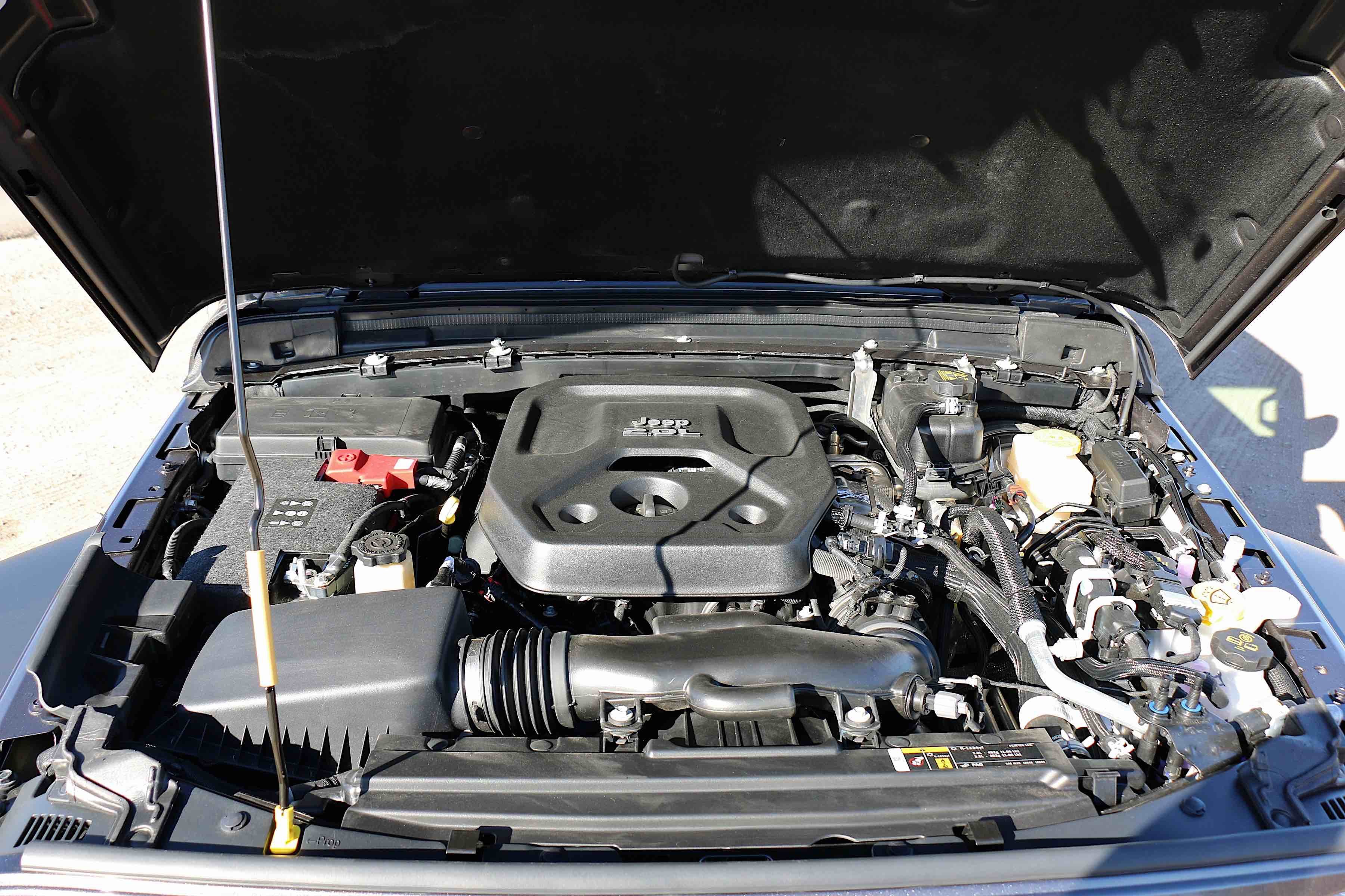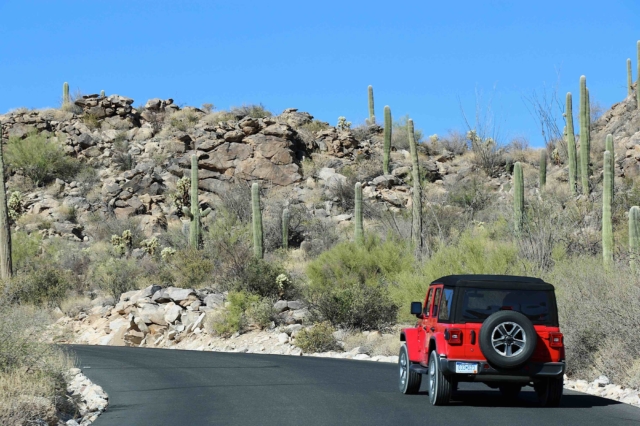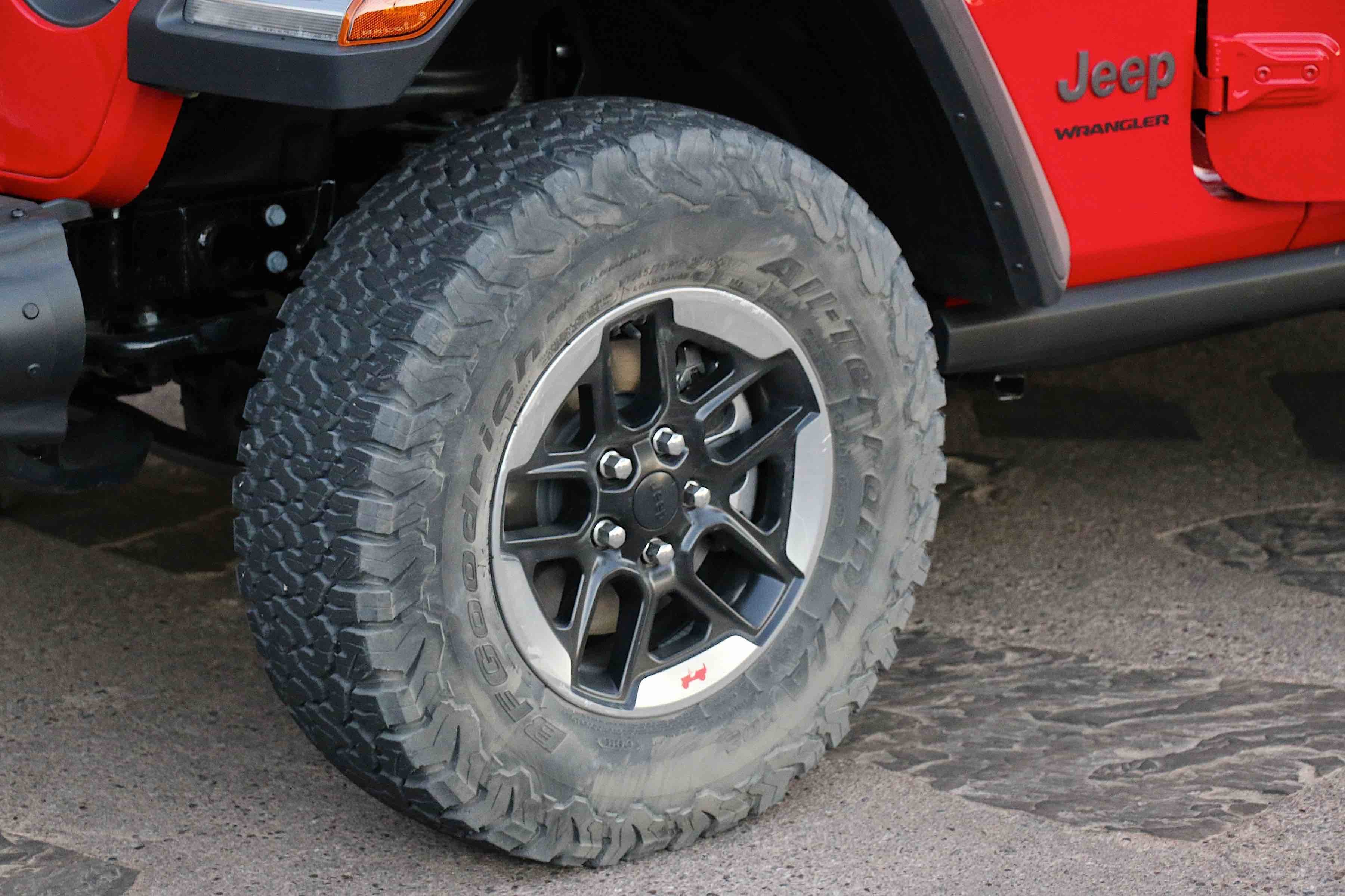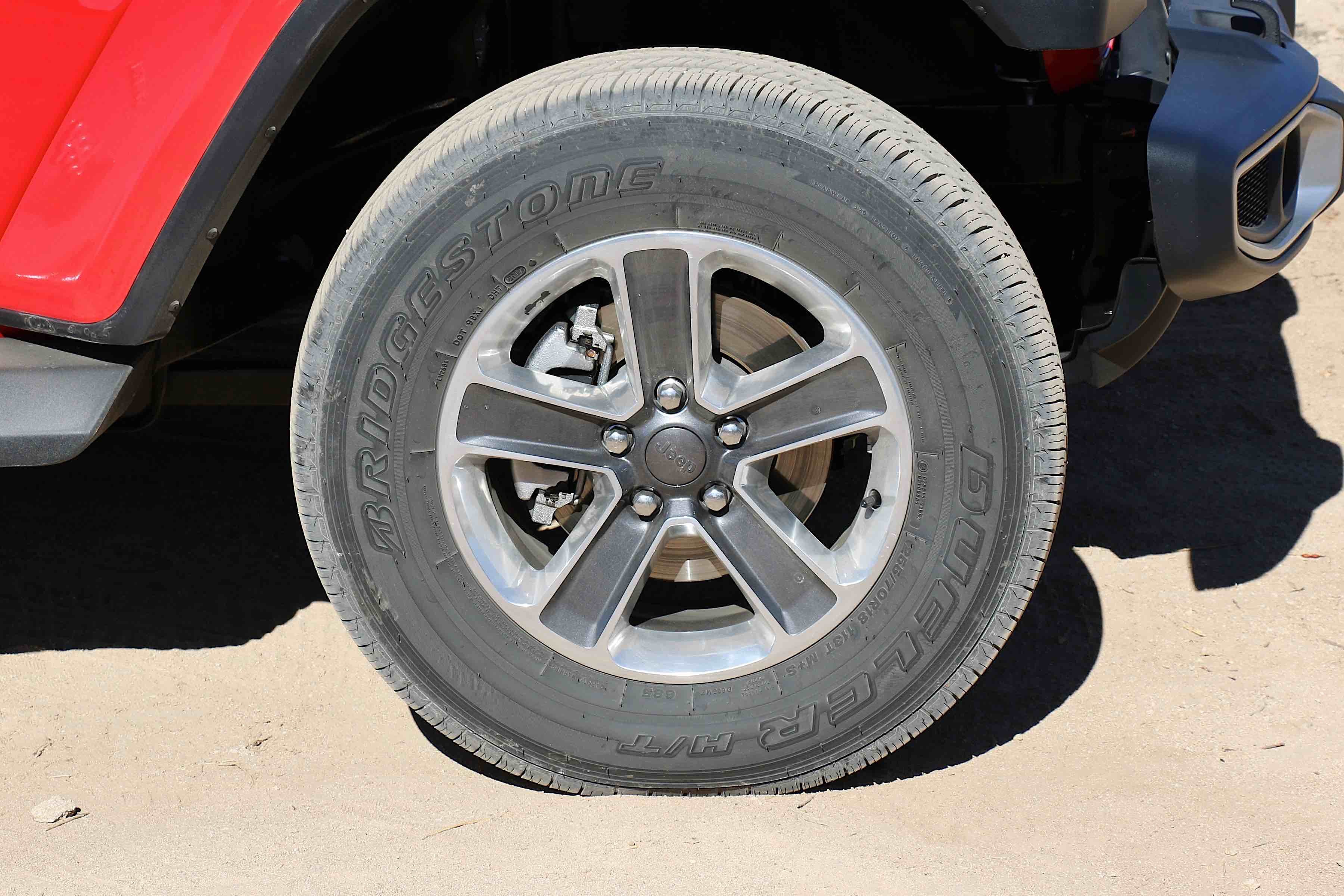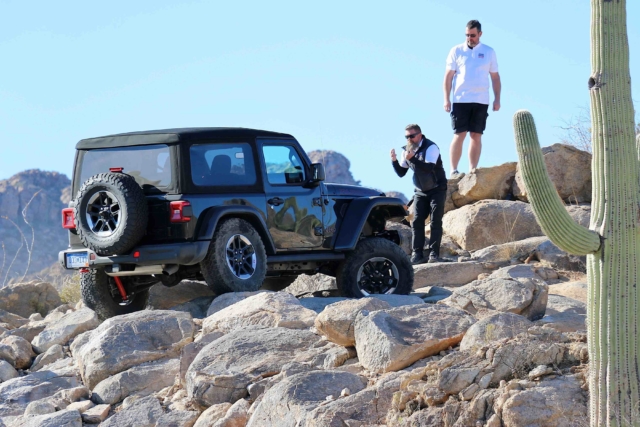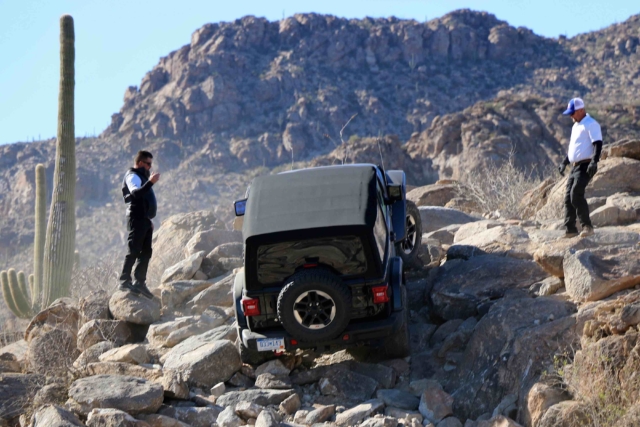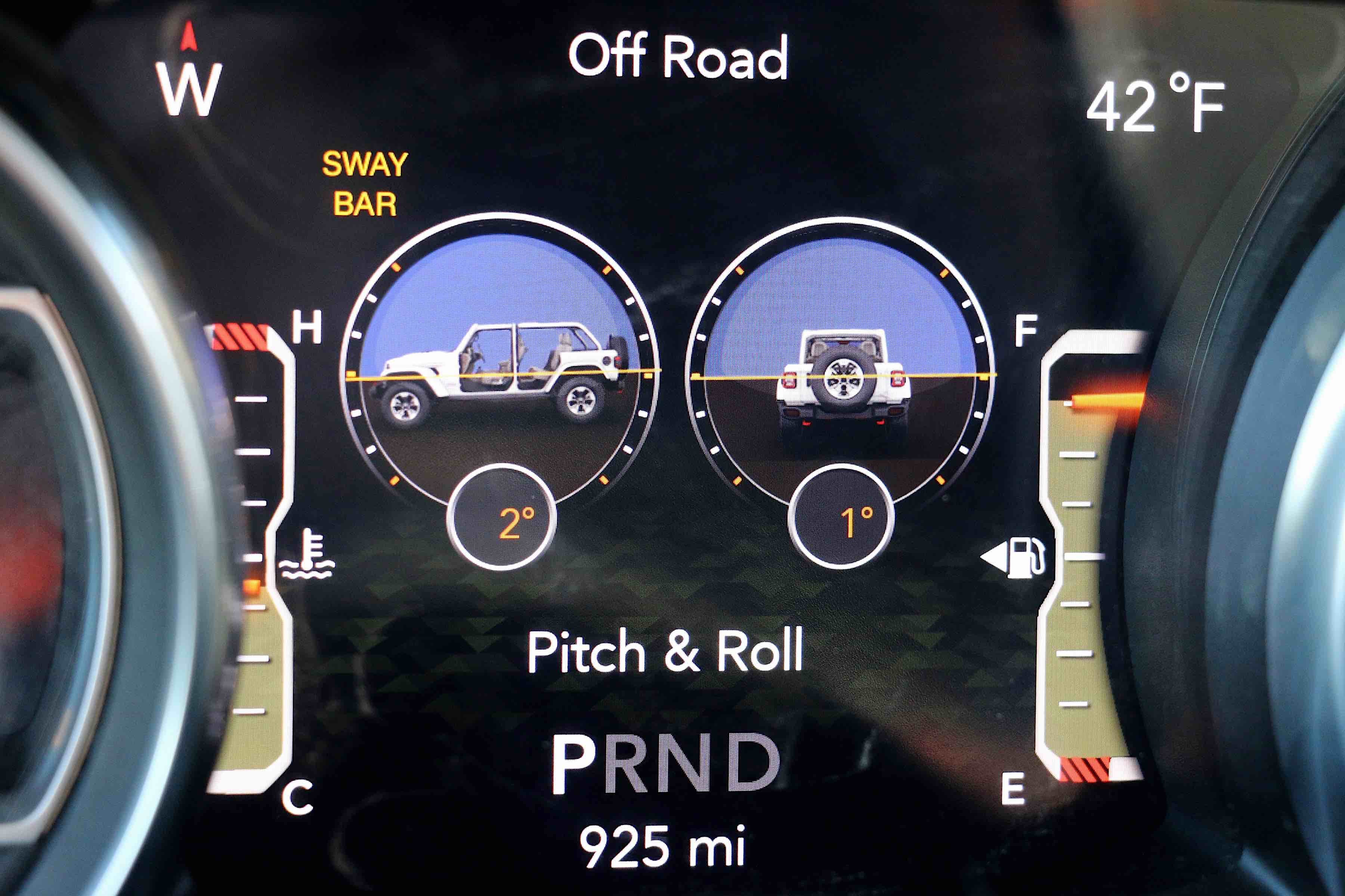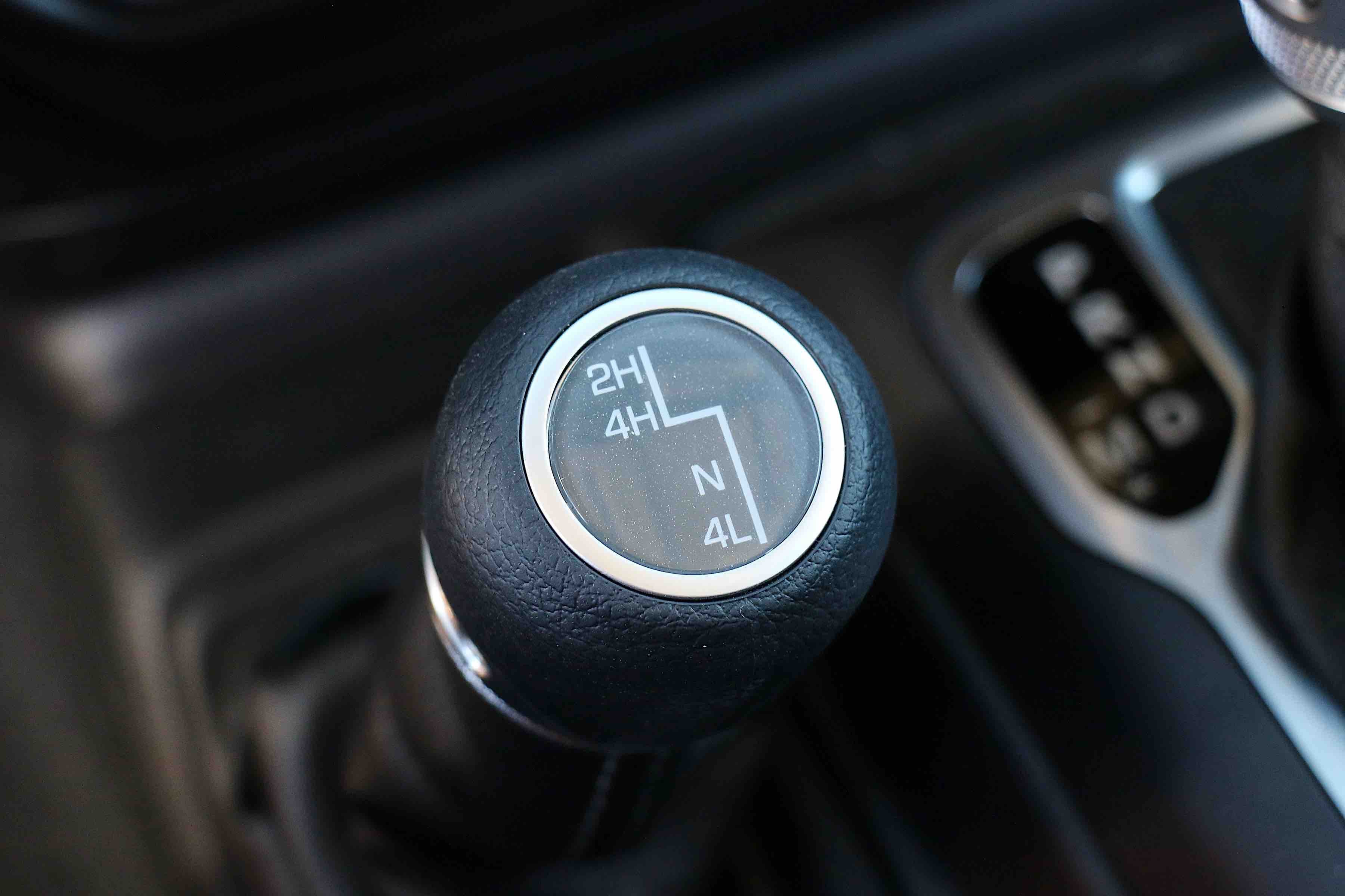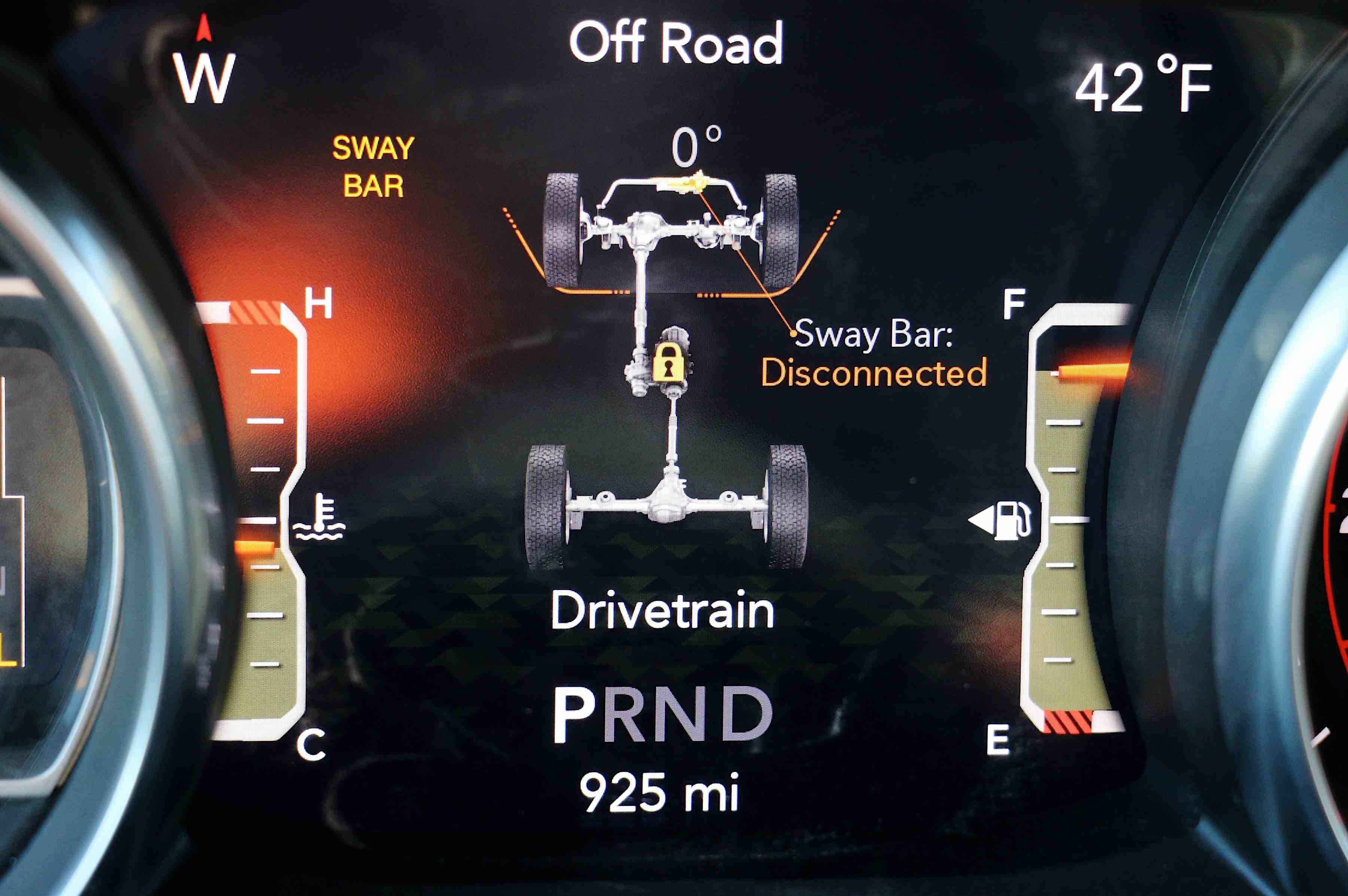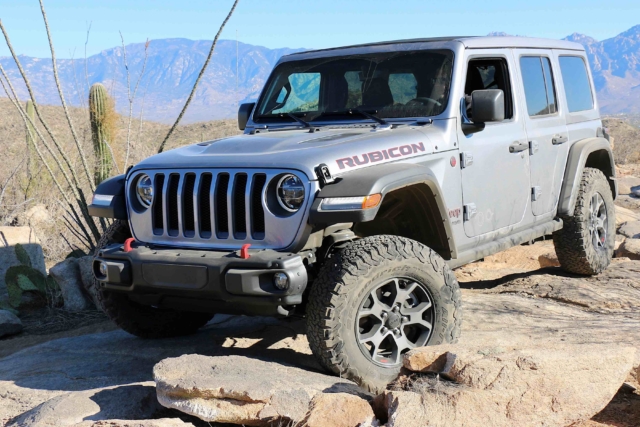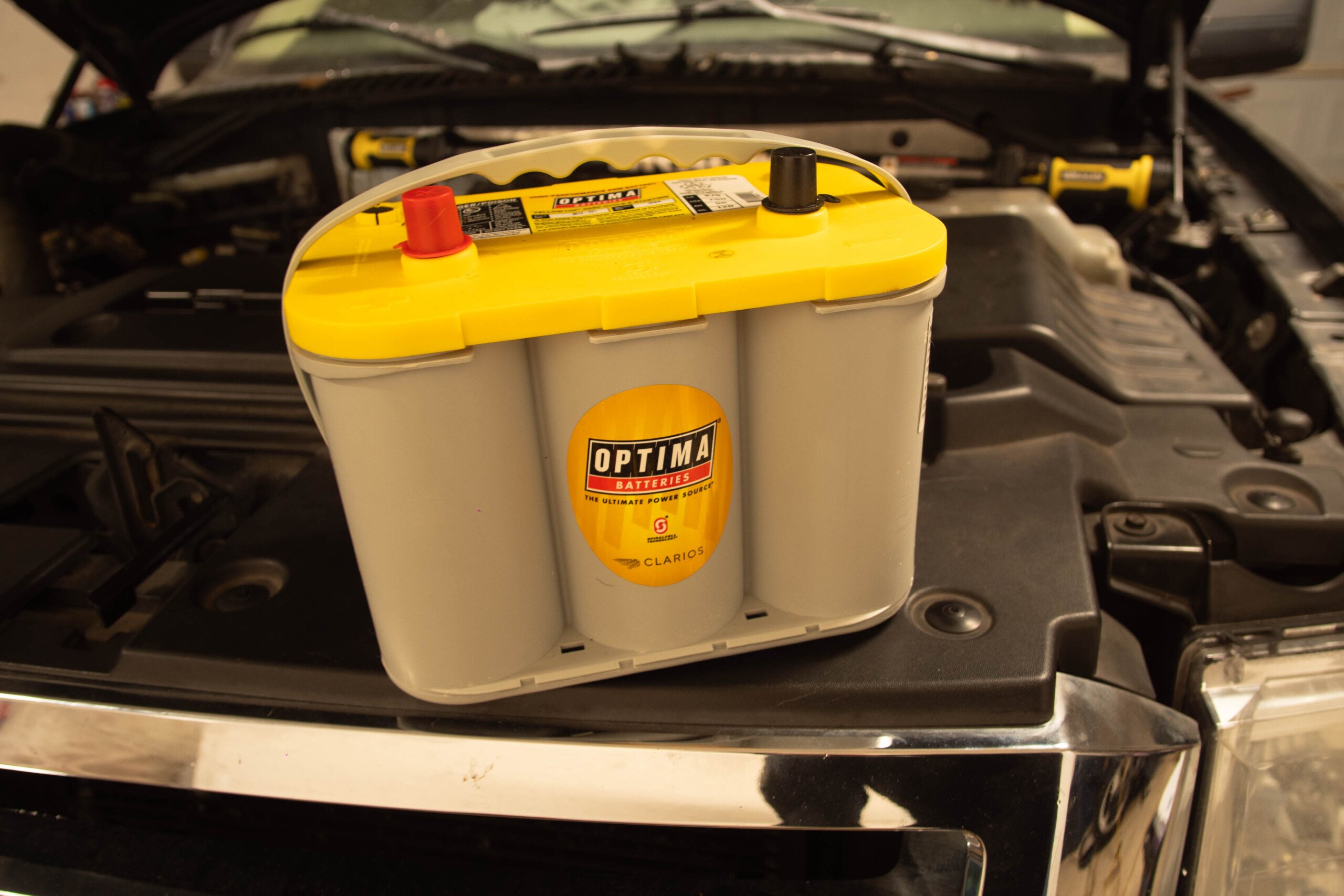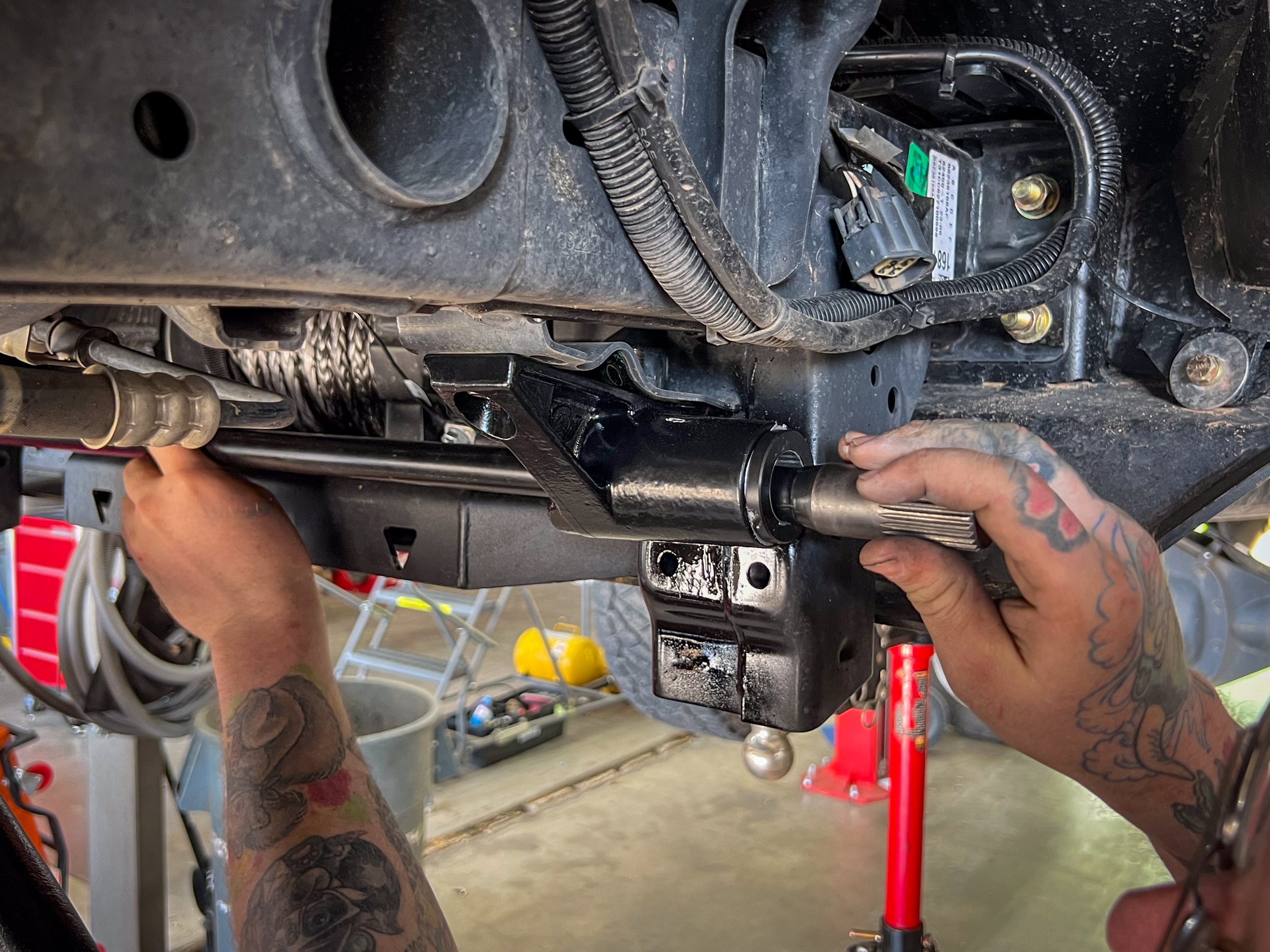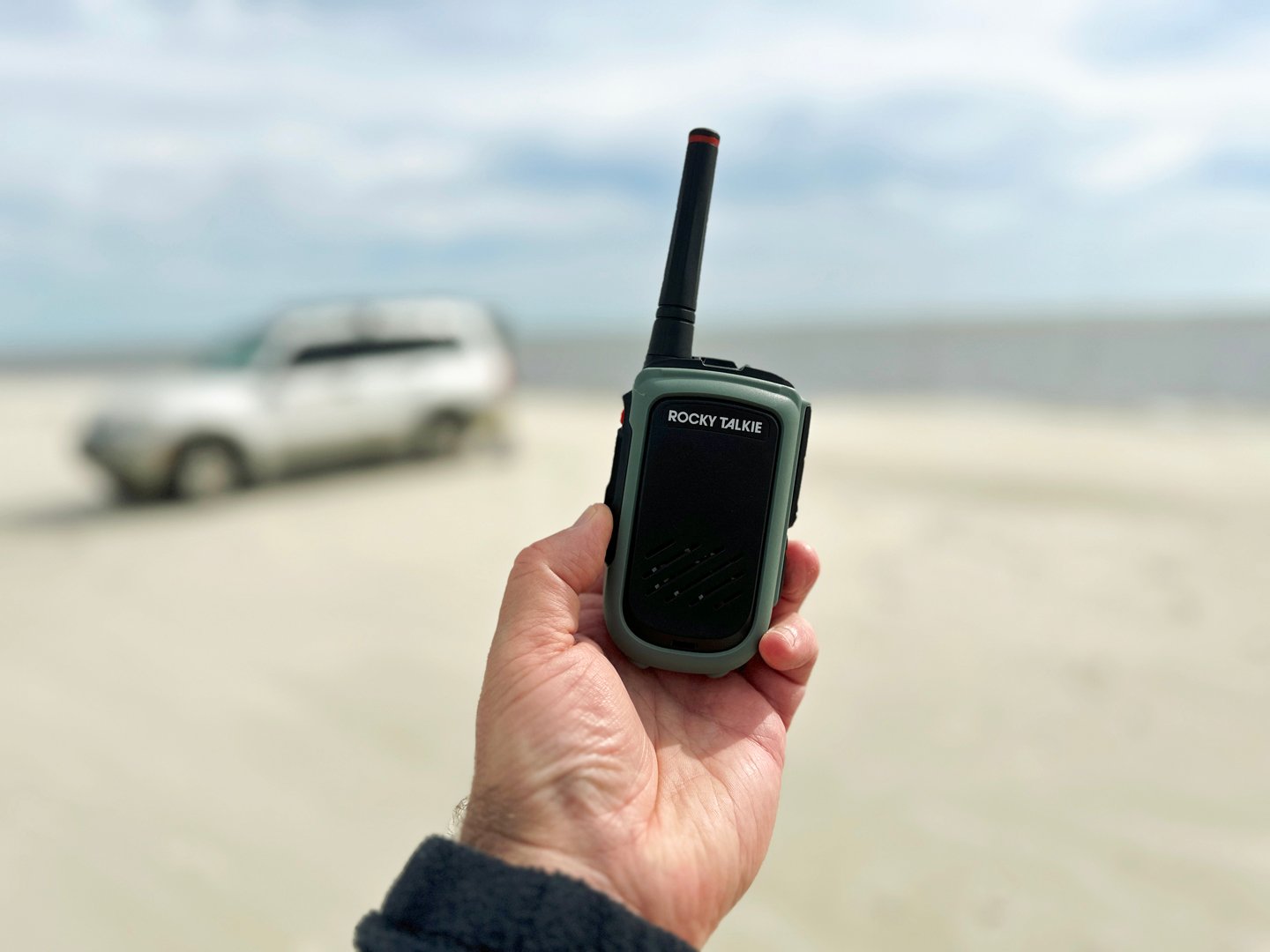Whenever I’m in press vehicles, I tend to be more alert than I would be in my own car. I never… OK… rarely… eat in them. I carefully choose my parking spots to prevent damage from hastily abandoned shopping carts. I certainly wash media loaners more often that I wash my personal A-to-B wheels.
As crazy as it may sound, I try to watch what I say in the vehicles manufacturers send me to evaluate. (Say. Not sing. I belt out a lot of tunes in OEM-owned cars.) I don’t always succeed, though. Whenever I drove the JK version of the Jeep Wrangler, including the Willys Wheeler, 75th Anniversary Edition, Rubicon Hard Rock, and Sahara, I often muttered things such as, “This Pentastar V6 is such a dog! Why don’t they offer an alternative?!” and “Ugh… FCA knows how to do infotainment better than this. I’ve seen it in its other vehicles!” and “Who still uses a five-speed automatic?!”
I’m convinced Jeep was recording my rants because they addressed them with the all-new 2018 Wrangler. They fixed what was wrong with the JK, kept what worked, then made that better. I recently got a chance to experience the progress Jeep made with its iconic off-roader during the North American media launch of the JL Wrangler in Tucson, Arizona.
The Rig
The all-new Wrangler sticks to the two- and four-door Unlimited body style formula. For now, the trim lines are simple: Sport, Sport S, and Rubicon for Wrangler and Sport, Sport S, Sahara, and Rubicon for Wrangler Unlimited.
According to Jeep, it reduced the two-door Wrangler’s weight by approximately 140 pounds and dropped more than 200 pounds from the Unlimited through the extensive use of aluminum. The lightweight material makes up the doors, hinges, hood, fenders, and windshield frame; engineers chose magnesium for the swing gate. The lightest two-door JL has a curb weight of 3,955 pounds. At the opposite end of the spectrum, the heaviest JLU tips the scales with a curb weight of 4,485 pounds.
Exterior
The JK Wrangler is blessed with rugged good looks. Despite its age, people still want it. Jeep’s design team didn’t mess up a good thing by making the JL look wildly different from its predecessor. It seems to be an evolutionary take on the JK – similar, but a little broader and more muscular.
The headlights are still round, but now they curve into the first and seventh slots of the grille, just like they did on the CJ-5 for decades. To make the grille more aerodynamic, designers leaned the top of it back toward the hood. They also reclined the windshield and tapered the back end. All of those changes add up to a nine percent reduction in drag.
The exterior on the JL had some much-needed updates.
Wheelbase extensions put the “bigger” in “bigger and better.” The two-door now has 1.4 more inches of wheelbase (96.8 total). Its Unlimited sibling has an additional 2.4 inches (118.4 total), some of which translates to additional rear seat legroom.
To improve outward visibility, Jeep design head Mark Allen and his team increased the amount of greenhouse glass on the JL. They managed to keep the fold-down windshield, as well. Lowering it is as easy as yanking off the wipers and removing four bolts. Allen said he did it himself in less than four minutes. That was nice to hear, but it was even better learning that the JL Wrangler now – FINALLY! – has a backup camera.
Top options range from a plain black hardtop to a body-color hardtop (available on the Sahara and Rubicon) to a three-piece hardtop with lighter Freedom panels to the new Sky One-Touch power retractable top (only available on Unlimited models).
The Wrangler uses a variety of standard and optional 17-inch and 18-inch wheels to get down roads and up trails. Rubicons are outfitted with 33-inch BF Goodrich KO2 All-Terrain tires, but their higher fender flares can accommodate 35-inch rubber.
Some of the same features we were familiar with on the JK, make a return visit.
When it’s time to come to a stop, the Wrangler Sport uses 12.9-inch vented front and 12.9-inch solid back rotors. Sahara and Rubicon models rely on vented front brakes of the same diameter and 13.4-inch solid rear rotors to scrub off excess speed.
Wrangler Rubicons have 44 degrees of approach angle, 27.8 degrees of breakover angle, 37 degrees of departure angle, and 10.9 inches of ground clearance. Those measurements don’t change much when it comes to the Unlimited Rubicon – except for breakover angle, which goes down to 22.6 degrees. The less hardcore Wrangler trim lines have more modest figures, but they’re not too far away from the Rubicon’s numbers.
Interior
Part of what sells Wranglers is Jeep heritage. That’s also what makes the JL’s cabin so interesting. The interior designers reached back into Jeep history to create the new Wrangler’s interior layout. They incorporated design touches from the Willys and Wranglers of yesteryear. You can see a couple of them in the dashboard’s prominent line of circular elements and the stamped metal info tag on the inner side of the swing gate.
Everything you need is within arms reach.
Jeep’s tech team updated the Wrangler with 5-inch, 7-inch, and 8.4-inch center screens, and the fourth-generation Uconnect system. The larger displays feature pinch, tap, and swipe capability; higher resolution; Apple CarPlay; and Android Auto. I’ve always found Uconnect to be a cinch to use and it’s still just as easy to operate in the JL. Jeep knew how to do better infotainment when the JK was still years away from being phased out. Now it’s finally done better. The Wrangler is officially in the 21st century.
Powertrain
You can now choose which engine you want to power the Wrangler. The 285-horsepower/260-lb-ft 3.6-liter Pentastar V6 is the base engine. One level up is a new twin-scroll-turbocharged 2.0-liter I4 combined with a 48-volt eTorque hybrid system. Total output is 270 horsepower and 295 lb-ft. According to FCA, eTorque provides auto stop/start functionality, electric power assist, extended fuel shut-off, shift management, smart battery charging, and regenerative braking. It can even turn off the engine and fuel flow during stops, coasting, or deceleration. No matter which gas engine you pick, the two-door Wrangler can pull up to 2,000 pounds and the Unlimited can tow a maximum of 3,500 pounds. Unfortunately, you won’t be able to get the top engine offering, a pumped-up 3.0-liter EcoDiesel V6 with 260 horsepower and 442 lb-ft of torque, until 2019.
Jeep updated the Wrangler’s transmission duo, too. A six-speed manual is still an option for JLs with the Pentastar engine. The available automatic now has eight forward speeds. Hall. E. Lujah. That helps the gas V6 get EPA fuel economy ratings of 18 city, 23 highway, and 20 combined mpg. With the manual gearbox, the JL is good for 17 city, 23 highway, and 19 combined mpg. The best-combined gas mileage I remember getting in an automatic JK was… not that high.
Two different engine options, the 2.0-liter I4 (left) and the 3.6-liter V6 (right).
Wrangler Sport and Sahara models use the part-time NV241 Command-Trac 4X4 system and its 2.72:1 low range to get over rough terrain. You can order the Sahara with an optional full-time MP3022 Selec-Trac four-wheel drive system and its standard 4.0 low range ratio and 3.45 axle ratio. The Rubicon rolls out of Jeep’s Toledo factory with the part-time NV241OR Rock-Trac system, a 4.0:1 low gear ratio, and 4.10 gearing.
Sport and Sahara models run Dana 30 front and Dana 35 rear axles. Rubicons are equipped with an electronic front sway bar disconnect, Dana 44s, and Tru-Lok electronic locking diffs. For added grip in low-traction environments, a Trac-Lok limited-slip differential is available. The controls for the lockers and sway bar are located south of the HVAC dials… and left of the factory-installed quartet of upfitter switches.
On-Road Driving Impressions
For the on-road portion of the event, my driving partner picked a two-door Sport with the 2.0 and eight-speed auto. Getting in was as easy as walking up to one of the redesigned door handles and pulling. No getting a key out and pressing a button on it. Keyless entry is finally a part of the Wrangler. The same goes for doors that stay open and in the place you left them. Goodbye strap hinges.
The turbo four was an instant hit with me. It was peppy and eager to go. The V6 that I found lethargic and overburdened in the JK felt alive and enthusiastic in the lighter JL.
Two different tires are offered on the JL and did well in their respective areas.
The chilly winds blowing through the desert gave me the perfect excuse to use my test vehicle’s three-stage front seat heating and heated steering wheel, which I was able to tilt and telescope into the perfect position. Unfortunately, the electro-hydraulic system the wheel was connected to was vague and slow off-center.
Aside from the available tech, the biggest improvement Jeep made to the inside of the Wrangler was what its retuned shock absorbers transmitted through the driver’s seat. Correction: didn’t transmit. The JL still felt like the body-on-frame SUV that it was, but it sure as hell didn’t crash over pavement bumps and joints the way the JK did. Less sometimes really is more.
Off-Road Driving Impressions
Jeep set up an extensive, challenging course of rock-covered paths that required numerous “hard driver” and “hard passenger” turns, and frequent spotting from Jeep Jamboree trail guides. I drove an automatic Unlimited Rubicon up the first time. My journey was a vertically moving showcase of the JLU’s 77.2:1 crawl ratio (manual Rubicons have an 84.2:1 ratio) and demonstration of how important skid plates are.
Looking for off-road controls? Everything can be monitored on the dash.
My driving line improved during my second trip up in a two-door model. Basically, all I needed to do was aim the Rubicon the direction I wanted to go and add gas. The JL clawed and climbed its way to the windy peaks. The Jeep Jamboree experts gave me kudos for my throttle management. I wish I could take credit, but I have to give it to Jeep’s engineering staff for calibrating the Wrangler’s 4LO throttle so well.
Final Verdict
Jeep’s all-new 2018 Wrangler may look similar to the model it replaces, but it’s vastly different in significant ways. It offers updated powertrains, better fuel economy, and thoroughly modern technology – all things I’d previously (and angrily) wished for the JKs I tested to have – while retaining its characteristic off-road prowess. Clearly, Jeep heard my complaints. I’m not even mad about the eavesdropping.
The 2018 Jeep Wrangler will arrive in dealerships early next year. The Pentastar-powered models will roll in first, followed by Wranglers with the 2.0 sometime during Q2. Two-door JL prices start at $26,995 for the Sport and $36,995 for the Rubicon. You’ll pay a minimum of $30,495 for the Unlimited Sport, $37,345 for the Unlimited Sahara, and $40,495 for the Unlimited Rubicon. Prices don’t include a $1,195 destination charge.

